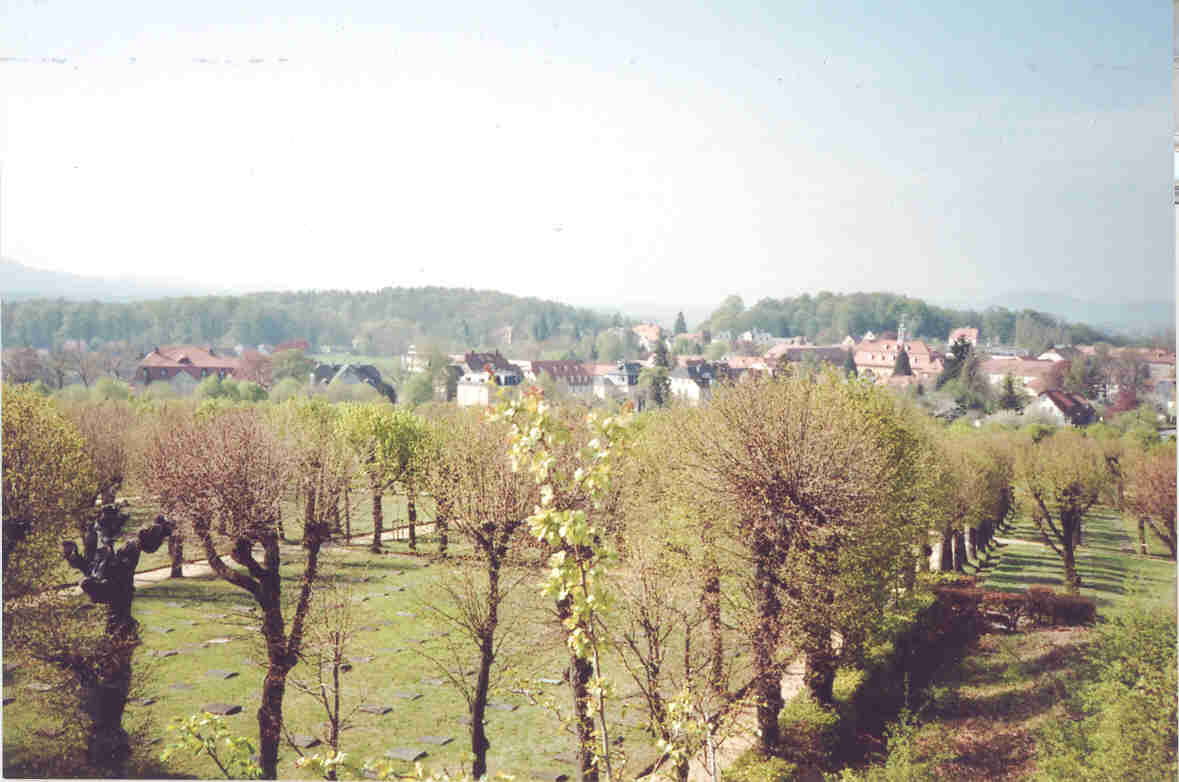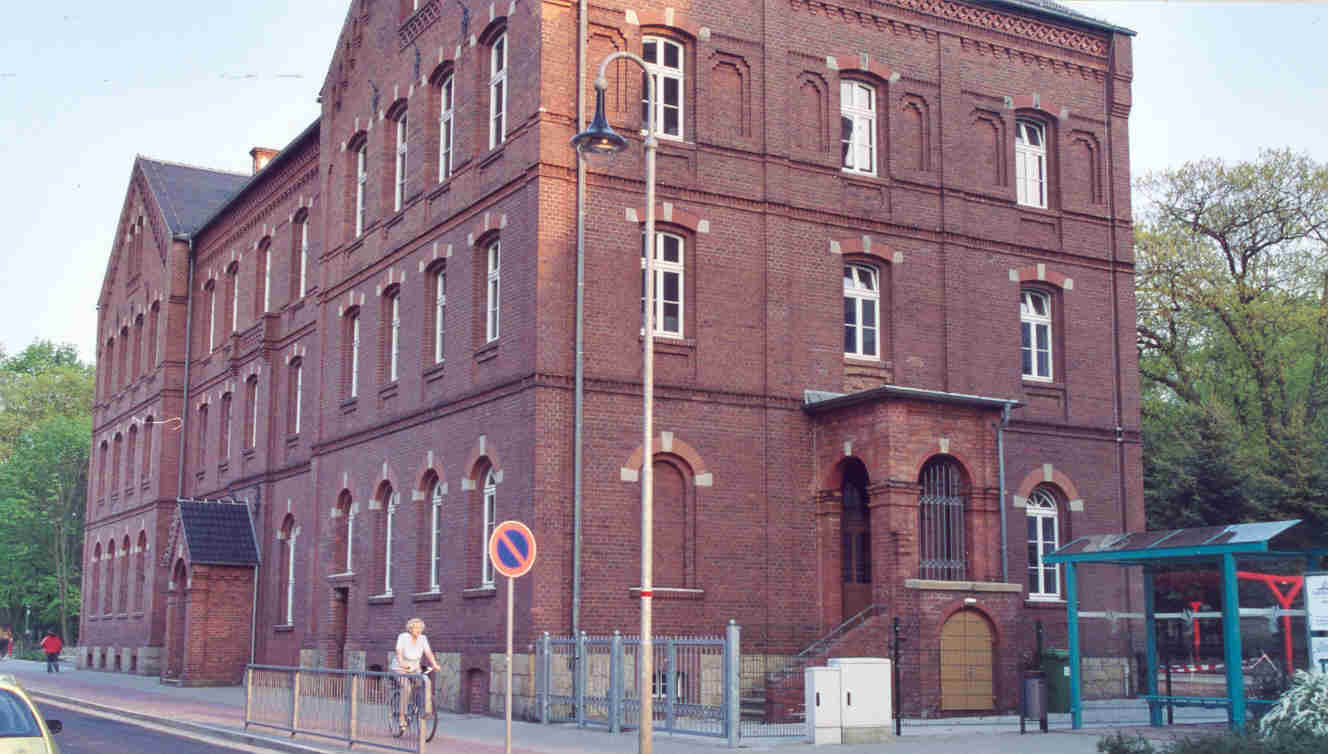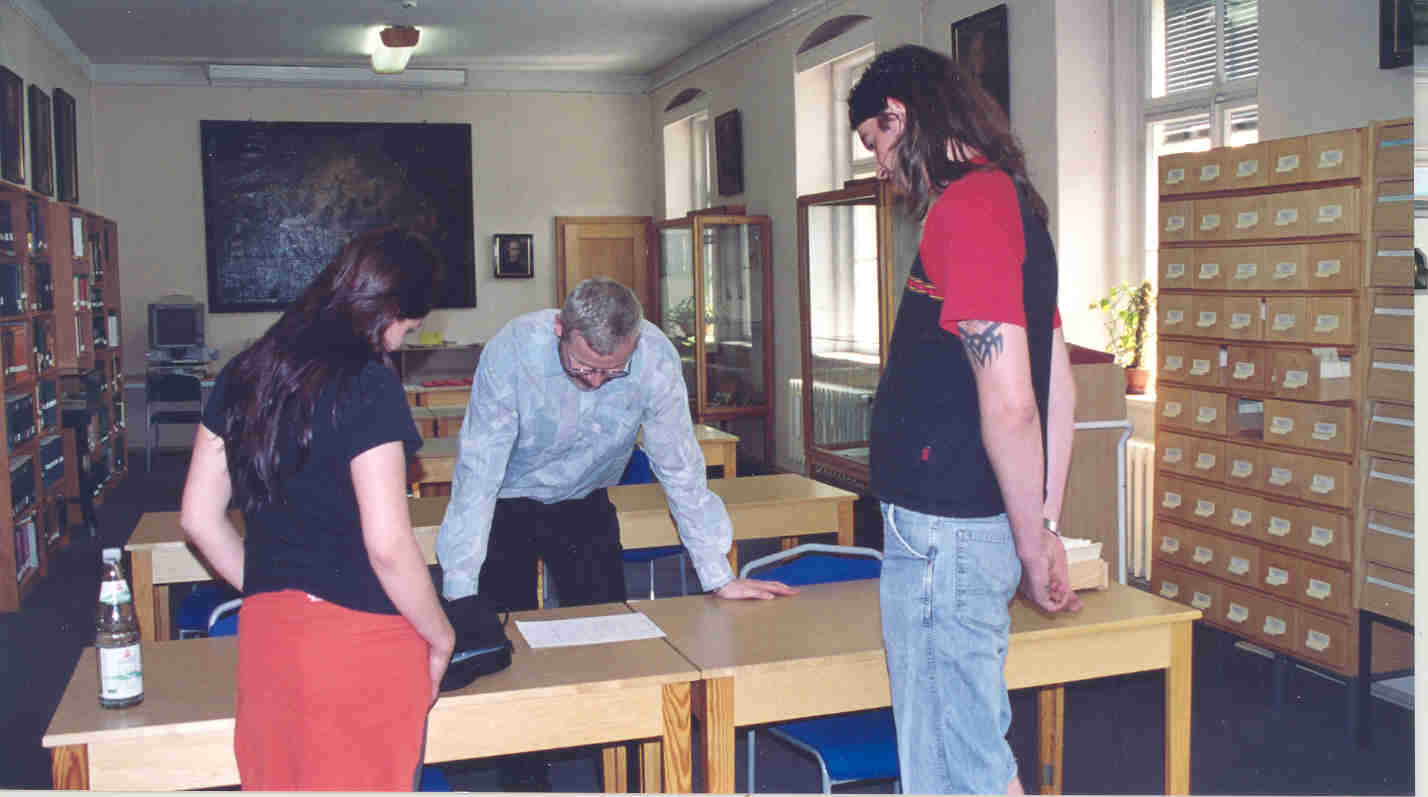Also known as:
Unitas Fratrum, Moravian Brethren, Mährenbrüder, Herrnhuter
The Moravians are a pietist community of brethren, properly called Unitas Fratrum, who emanated from a refugee village organised by Zinzendorf at Herrnhut (Saxony, Germany) from where they missionised around the globe. They had a strong commitment to spreading the word of Christ and understood themselves as a remnant people, which gave them a ready identification with many of the peoples whom they missionised, who were also exiled from their homelands, disempowered and diminished in number.
In Australia some thirty Moravian brethren missionaries from Germany and Britain were active for almost seventy years, from 1850 to 1919. Their entry into the Australian colonies was initiated by Charles LaTrobe, the first Lieutenant Governor of Victoria, from a family of noted Moravians. Moravians started missions at Lake Boga (1850-56), Ebenezer (1858-1904), and Ramahyuck (1862-1907), they also made an attempt in South Australia at Lake Kopperamanna (1866-68), and in Queensland Moravians were at Mapoon (1891-1919), Weipa and Aurukun (1898-1919). The 'Moravian model' became a powerful inspiration for missionising. The first Aboriginal mission in Queensland at Zion Hill was also designed ‘along Moravian lines’.
14th century origins
Today’s Community of Brethren traces its beginnings to a socio-religious movement in Bohemia and Moravia led by Jan Hus (1369-1415), who challenged corruption and the practice of selling indulgences in the Catholic Church, and advocated the use of Czech rather than Latin in liturgies. He was burned at the stake in 1415 but his followers formed a church in 1457 which effectively represented a protestant movement within the Catholic Church sixty years before Luther penned his theses at Wittenberg and initiated the Reformation. Jan Hus and other figures from this movement, including the Philosopher and Hussite Bishop Johann Amos Comenius, have become national heroes in the CzechRepublic.
The history of Hussite Moravians is one of persecution, imprisonment, torture, banishment, exile, and outlaw existence at the mercy of changing attitudes from a succession of kings and emperors during the upheavals of the Reformation and Thirty Years War (1618-48). In the late 15th century they were referred to in Czech as Jamnici (caverners) because they sought refuge in caves and forests, and by the 18th century there were only small remnant communities referred to as ’hidden seed’.
Regrouping at Herrnhut under Zinzendorf
| View of Herrnhut |
 |
| Photo: Regina Ganter 2007 |
From 1722 such a community found shelter on the estate of the youthful pietist Count
Zinzendorf(1700-1760) in Saxony, east of Dresden, who allocated some land at Berthelsdorf for a refugee settlement which became Herrnhut. Herrnhut refers both to ‘unter des Herrn Hut’ (under the care of the Lord), and the shape of the local mountain, the Hutberg, which does resemble a hat (Hut).
It attracted other religious exiles from adjacent regions, so that the community of about 300 in the 1720s consisted of Moravian peasants and Saxon artisans, speaking different languages. They were united only by a commitment to Christ and a dissatisfaction with organised religion, which by then included the Protestant churches. Under Zinzendorf’s influence Herrnhut became the seed-pot of an evangelistic movement.
The symbolic moment in which the Unitas Fratrum of Moravia was renewed and reignited at Herrnhut was a common supper in August 1727 with the estate’s serfs whom Zinzendorf - deeply committed to enlightenment values - set free. Eight years later one of the Herrnhut Moravians was blessed as bishop in 1735 by a grandson of Comenius, the last bishop of the old Unitas Fratrum, and so the link with deep historical roots was renewed.
They were recognised as a separate MoravianChurch in 1742 by the Prussian King Frederick William I, although Zinzendorf preferred to understand the Herrnhuters as a movement within the LutheranChurch (an ecclesiola in ecclesia). Since then its members have been referred to as Moravians, although they prefer to call themselves Brethren, belonging to the Unity of Brethren or Unitas Fratrum. Not being part of a larger church, Moravian missionaries were all the more ready to work ecumenically with other Protestant churches, particularly Baptists, Presbyterians and Lutherans.
To the zeal, pragmatism and simplicity of the exiled peasant community at Herrnhut, Zinzendorf brought a commitment to worldwide mission and pietist devotion and scholarship. Zinzendorf was very well connected and initiated the sending of missionaries to the West Indies in 1732 and Greenland in 1733.
Worldwide mission
Within its first thirty years this small community sent 226 missionaries to Greenland, north America, Africa and the West Indies. The first mission in South Africa was founded by a Moravian in 1738 at Genadendal (Gnadental, or valley of grace) among the Khoi people. In 1741 a Moravian colony called Bethlehem commenced in Pennsylvania which grew to several hundred brethren within ten years, and eventually established 32 missions among American Indians and slave-traded Africans.
The successful Moravians became a model emulated by other Protestant mission societies. Inspired by August Francke’s Halle Mission Society the Herrnhuters are themselves credited with inspiring the establishment of other Protestant missionary societies in the 18
th and 19
th century, such as the Particular Baptist Society for Propagating the Gospel (1792), the London Missionary Society (1795), the Scottish Missionary Society (1796), the Church Missionary Society (1799), and the
Basel Mission Society (1850).
Herrnhut missionaries were most active in the 18th century, during which they commenced 32 missions around the colonial world. In the 19th century another 13 attempts were made, but in the 20th century only three new missions were founded (in Honduras, Costa Rica, and Siberia). Today the largest Moravian congregations are in Tanzania.
Connections to the world of science
Their worldwide connections are still reflected in the small Herrnhut community which has a high regard for scholarship. The village has a substantial museum, a well-organised archive, and excellent facilities for visiting scholars and student groups. A lecturer at the BarbyCollege of the Unitas Fratrum, Johann Jakob Bossart wrote one of the earliest instructions for gathering natural specimens, in 1774. This pamphlet was given to missionaries in the field, and led to an increase in objects sent home to Herrnhut. Its cabinet of curiosities (Naturalienkabinett) attracted high-profile visitors, such as Johann Wolfgang von Goethe who came in 1776 together with count Franz of Anhalt-Dessau and Baron Carl August of Saxony-Weimar. Goethe expressed his high regard for the Herrnhut community model. In 1878 Herrnhut citizens formed a museum club in order to organise and display the various ethnographic and natural specimens which today comprises 5,500 ethnographic objects, including some from James Cook’s voyage.
There were a number of connections between Herrnhut and the world of colonial science. James Hutton (1715-1795), book dealer and chair of the Moravian Society for the Propagation of the Gospel, maintained close connections to the British Admiralty. The first British governor of Newfoundland Hugh Palliser, was familiar with the Moravians and supported their involvement in an Inuit mission in the 1760s. Subsequently Unitas Fratrum missionaries in Labrador and south India compiled botanical collections which Hutton passed on to Sir Joseph Banks and Dr Daniel Solander. These two met with James Hutton shortly after their return from Cook’s first voyage to discuss the possibility of establishing a mission in either New Zealand or New Holland. Cook himself met the Moravians through Hugh Palliser who had now become the Admiralty’s fleet inspector, and took a Moravian missionary to the Labrador coast in 1764. In 1765 the Admiralty offered free passage for a Moravian missionary to America to accompany Samuel Wallis and Philip Carteret, and for Cook’s third voyage to find the North-West passage, they requested a Moravian Inuit interpreter. On this voyage Cook consulted the history of Greenland written by David Cranz from Herrnhut in 1765 and translated into English in 1767, to compare the cultures and languages of Greenland Inuit with those of Yupik.
[1]
Moravians in Britain
In 1744 the Moravians formed a colony at Fulneck near Leeds. This gave them better access to the expanding British Empire which offered much scope for non-Catholic mission work. In 1746 the charismatic Dublin Baptist Benjamin La Trobe (1728-86) joined the Fulneck community.
[2] He was allocated a wife in 1756 from the Antes family prominent in the Philadelphia Moravian community. He became the Fulneck community leader in 1768. One of their sons, Benjamin La Trobe (1764-1820) became one of the foremost American architects, builder of the Capitol, and their son Christian Ignatius La Trobe (1758-1836) was educated at Herrnhut and NieskyCollege, and returned from Germany to London in 1785 to become secretary of the Brethren’s Society for the Furtherance of the Gospel.
Soon after, in 1786, Wilberforce requested his support for the anti-slavery movement. Although the Moravians were closely aligned with the anti-slavery movement, its leadership was cautious. Ignatius La Trobe did not wish the Moravians to be overtly connected to political positions, since their overseas settlements depended on colonial powers for protection. The Cape Town settlement for instance passed from Dutch to British hands in 1795, and Moravians needed to be in a position to work with both powers. Despite the refusal to formally align themselves with the anti-slavery movement, relations between La Trobe and Wilberforce were cordial, and Wilberforce later financially contributed to Moravian mission activities. Moravians were prominent in the mission to West Indies slaves and ex-slaves and privately supported abolition. During the Jamaican slave uprisings in 1832 Moravians were accused of supporting rioters, a claim why they refuted.
[3]
Ignatius La Trobe became a composer and musician who introduced Haydn, Mozart and Pergolesi to British audiences. From a visit by Josef Haydn in 1790 emerged a lifelong friendship. Ignatius was allocated a wife in 1790 and had five children, one of them Charles La Trobe (1801-1875) who became the first lieutenant governor of Victoria (1839-1952), and Peter La Trobe, who became secretary of the SFG, the Brethren’s Society for the Furtherance of the Gospel.
[4]
Missionary training
| The former training college at Niesky |
 |
| Photo: Regina Ganter 2007 |
A missionary training college was established at Niesky in 1869, following the example of other mission societies. It remained there until 1923, was relocated to Herrnhut in 1925 and finally closed in 1941 when it became evident that German missionaries were not going to be welcomed in the mission fields. The candidates at the college were themselves from Moravian communities, and many of them had previously attended the Kleinwelka school. Unlike some of the candidates at Hermannsburg, Basel or Neuendettelsau, these were not impoverished and poorly educated artisans or farmers who sought a short-cut into an overseas placement.
The Niesky college training was less physically demanding than at other missionary training colleges. In 1890 it consisted of only five academic subjects, one language (5 hours of English) gardening, singing and an evening on Sunday School preparation. Afternoon classes were only held on three days, and Friday afternoons were devoted to a two-hour coffee meeting. The academic subjects were spelling, Bible Studies (Old Testament and New Testament), church history, general mission history and bible history. An annotation to the timetable shows that there was a timetable clash between bible History and spelling with the daily music school, being either piano, harmonium or organ, so that Spelling and bible history cannot have been well attended.
Niesky College timetable (1890)[5]
| |
Monday |
Tuesday |
Wednesday |
Thursday |
Friday |
Saturday |
| 7.30-8.30 |
History Isr. |
Orthography |
History Isr. |
History Isr. |
Orthography |
|
| 9.00 |
NT |
English |
English |
English |
NT |
Dogma |
| 10.00 |
Church History |
General Mission History |
OT |
Church History |
General Mission History |
OT |
| 11.00 |
Dogma |
Singing |
NT |
NT |
Singing |
NT |
| |
|
|
|
|
|
|
| 2.00 |
English |
Gardening |
|
English |
Coffee |
|
| 3.00 |
English |
Gardening |
|
English |
Coffee |
|
| |
|
|
|
|
|
|
| Evening |
|
|
|
Sunday School Preparation |
|
|
The music schools, being organ, harmonium or piano, were held daily from 7.00 to 8.30 am.
In 1889 the college had 15 trainees, four of whom had been admitted that year. In 1890 eleven candidates were called for service - three to South Africa, three to Suriname, and one each to Greenland and east Africa. Some of them were held over to the following year, in which two aspirants, who had been requesting admission for some time, were accepted, since the college was now fairly depleted of candidates. For admission candidates submitted a narrative curriculum vitae (see for example
Nicolas Hey, the Mapoon missionary). The student assessments were also narrative and qualitative.
The Moravian model
The Moravians travelled widely and saw themselves as pilgrims and exiles. They understood themselves in an apostolic role emulating Paul, ready to transplant and independently support themselves. John Wesley who travelled on the same ship as some Moravian missionaries to Georgia in 1735, later visited Zinzendorf and the Herrnhut community, and felt inspired by them to form the Methodist church in 1741. William Carey also took his lead from the Moravians when he initiated the Baptist Missionary Society in 1792.
Zinzendorf produced at least fourteen pamphlets of instruction for missionaries and therefore seeded a missology. He required, for example, that each write a memoir before departing from the home community, and encouraged them to write annually to the Elders conference about their progress and situation. These progress reports became the basis for the Periodical Accounts which Ignatius La Trobe commenced publishing in 1790, and which were read widely by persons interested in the affairs of colonies, including Richard Johnson, the first chaplain in the new colony of Port Jackson. These practices, of requiring candidates to write a personal resume before leaving the mission house, and of publishing reports in newsletters, were later adopted by other Protestant mission institutions.
Some of the particular social and cultural arrangements of the Herrnhut and other Moravian communities were reflected in their mission work. They had a strong emphasis on music, singing, and hymn writing. They lived in a choir system where community members were organised as single men’s choir, single women’s choir, widows’ choir, boys and girls choirs. they lived in choir houses each with their elder and group meetings to arrange housekeeping, craft production, education and worship. The choir system created spheres of influence for women and also facilitated arranged marriages.
There was a strong ethos of egalitarianism, and education was available to males and females. The Herrnhut school taught the Bible languages Latin, Greek, and Hebrew as well as German, French and English, history and geography. This meant that a high standard of schooling was available to children of both sexes from all social backgrounds, and both men and women engaged in translations and hymn writing.
Difficult or controversial decisions were decided by drawing lots, trusting in divine guidance, in accordance with Acts 1:26 of the New Testament. The election of the first elders of the congregation was decided by lot, and sometimes marriages, the selection of missionaries, or decisions about work projects were decided by lot.
In their mission work, the Moravians learned, adapted, and recorded vernacular languages, translated texts, and created high standards of schooling for indigenous children. They sought to include their congregations actively in the liturgical service, particularly through singing. They implemented a form of choir system on missions and also arranged marriages for themselves and their mission residents.
Unlike the Lutheran mission societies, Herrnhut acknowledged the role of missionary women, and kept service records of the men as well as the women who were sent into missions.
Retired missionaries were welcomed back into the community, and the community maintained a boarding school at nearby Kleinwelka for the children of missionaries in active service. Of course, many of these parents found it a great hardship to part with their school-age children for many years, completely out of reach of a visit.
Pious devotion, collective living arrangements, arranged marriages, the separation of children from their parents for education, and a frugal and industrious life came to characterise the Moravian model.
|
Rüdger Kröger and archive users at the Unitätsarchiv Herrnhut
|
 |
| Photo: Regina Ganter 2007 |
[1]Völkerkundemuseum Herrnhut Ethnographie und Herrnhuter Mission: Katalog zur ständigen Ausstellung im Völkerkundemeuseum Herrnhut, Aussenstelle des Staatlichen Museums für Völkerkunde in Dresden, Dresden, 2003, pp.18-21.
[3] Buchner, John Henry, The Moravians in Jamaica: History of the Mission of the United Brethren’s Church to the Negroes in the island of Jamaica, from the year 1754 to 1854, London, Longman, Brown, and Co., 1854, p. 100.
[5] Berichte über die Missionsschule Niesky, R15.A.b.7, Herrnhut Archives.
[6] Th. Bauer, Head of Unitätsdirektion, Berthelsdorf to Hey 24. 12. 1903, Missionsdirektion Personalakten, Nicolaus Hey, MD825, Herrnhut Archives.



